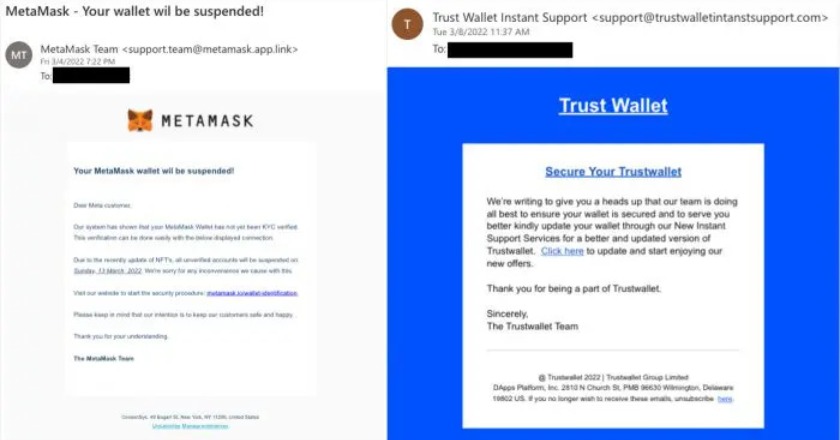Metaverse is here. What now? In the first half of the two-part series, we looked into key stakeholders building the Metaverse, and factors driving the conversation. In this part, we delve into the purpose of a responsible metaverse and concerns surrounding cybersecurity as this virtual world nears mainstream adoption.
Read part 1 here: Into the metaverse: A trend or a revolution?
Data breaches shot through the roof in 2021. It was the most expensive year in almost two decades for a data breach, rising from USD 3.86 million to USD 4.24 million annually. The emergence of Metaverse in 2022 is already sparking conversations about regulation, privacy guardrails, and cybersecurity vulnerabilities at government, industry, and societal levels. However, will this virtual universe evolve without addressing all of its risks?
The recent conversation surrounding metaverse might lead to the next incarnation of the internet. It is positioned to deliver the promise of an immersive, next generational virtual 3D world that can connect all sorts of digital environments virtually resembling the actual world we live in. As exciting as the idea of a revolutionized digital world is, there have been several security concerns that have led to the question: what will the metaverse mean for cybersecurity in 2022?
Peek-a-boo! Key metaverse cybersecurity concerns
Although the specific ideas around the metaverse are somewhat hazy, privacy and security concerns have surfaced surrounding the concept. There are numerous speculations around how it might impact cybersecurity and what might be some top security concerns needing immediate attention. The following cybersecurity issues are likely in the metaverse:
- NFTs are at the epicenter of the metaverse economy. In February 2022, cyberattackers stole hundreds of NFTs worth USD 1.7 million from OpenSea users, causing a late-night panic among the site’s broad user base. There could be an already evident rise in NFT scams, such as selling fake NFTs.

Source: Antivirus
- Possible growth in blockchain scams perpetrated by seemingly legitimate financial institutions
- An occurrence of malicious smart contracts duping people and gaining access to personal information or cryptocurrency wallets. In December 2021, crypto investors were duped for USD 1 million via bogus MetaMask Token in a honeypot and rug pull scam.

Source: TrendMicro
- Intellectual property may be more difficult to defend when individuals and organizations exist not just in the physical world but also in the metaverse.
- The use of vulnerable AR/VR devices becoming an entryway for malware invasions and data breaches. VR headsets can collect more data about us than traditional screens, which gives companies more opportunities to take and share that data for profiling and advertising.
To begin with, AR/VR devices collect large amounts of user data and information such as biometric information, creating a potential for hack attacks. Today, the demand for user data is likely to grow with the Metaverse, as it could provide leverage to collect more user data. Moreover, the metaverse avatars have the potential to become a source of data collection which is turn might violate user privacy.
What will metaverse cybersecurity be like in 2022?
Since the idea of a responsible metaverse has yet to come to life, it is hard to draw fine lines around how it might impact cybersecurity. However, we can gather an idea based on the working of other “metaverses” the gaming industry has managed to conjure.
1. Social engineering attacks
Ever since the concept of metaverse become the talk of the town, cybercriminal activity has caught on, especially the rising NFT scams. These scams deploy social engineering attacks which are not going away any time soon. There will likely be a rise in such attacks as the metaverse continues to take shape.
2. Data theft
The metaverse is going to house an extensive collection of sensitive data. IN turn, there will be a probable rise in hacking. Moreover, there is an evident impact on data privacy. If things remain vulnerable, there could be frequent hacks and data theft, harming all users. This, in turn will lead to multiple threats of malware invasions.
3. Decentralization vs vulnerabilities
The fact that the metaverse is built through blockchain technology should be another concern. While this technology is secure, it is not immune to vulnerabilities altogether. Moreover, it is decentralized. This means that there are no formal admins or moderators to control the interactions. With an absence of authority, retrieving stolen or illegally obtained assets may become a herculean task.
4. Avatars vs identification
It is no news that the metaverse will operate through avatars. So, there will be no concrete method to identify cybercriminals. Anyone can dupe the digital landscape. Such is the case of dark web, too.
Not all superheroes wear capes: Implementing metaverse cybersecurity
Since the metaverse will bring about with it a hoard of cybersecurity issues, there will be a crucial need to implement strict policies and protocols. For starters, there will be a dire need to ensure robust endpoint security through VPNs, proxies, and antimalware software. However, this should only be considered as step one.
With social engineering and phishing attacks likely to rise, businesses and individuals will need to spread awareness regarding such issues. Cybersecurity, in essence, requires a holistic approach. Therefore, with a perfect blend of security tools and appropriate awareness surrounding the same, a base for safety can be established.
Furthermore, many organizations will need to prepare ahead and implement the use of penetration testing and threat hunting. Relying on vulnerability scanning processes will ensure creation of a responsible metaverse by securing their systems from being compromised. Thus, individuals and organizations must recognize the dire need to secure themselves and understand the risks of ignoring the same. This is how we can get one step closer to ensuring a cyber-resilient metaverse in 2022.
Moving towards a responsible metaverse
Digitization, in all its forms, is exciting. It eases people’s lives all over and eradicates several problems. However, in all its glamor, the cybersecurity aspect of digitization is often undermined, as is evident with the metaverse. Moving ahead, ethical and cybersecurity challenges will drastically increase and thus, will require novel combating approaches.
Responsible metaverse is a remarkable concept and can help improve interactions globally. However, it is important to realize that we may fail to achieve without appropriate cybersecurity policies in place. Therefore, the collective aim should be to build an inclusive and sustainable metaverse that respects and safeguards individual privacy.
Seeking actionable insights into how the metaverse will evolve and what you can do to prepare for it? Look no further than Netscribes’ technology and innovation intelligence solutions.
Get in touch with us today.






